Recovering from pneumonia is not merely about alleviating symptoms and returning to daily life. For individuals engaged in endurance and stamina training, or those looking to regain peak physical performance, the recovery phase is a pivotal opportunity to restore and optimize respiratory health. Incorporating deep breathing and coughing exercises into a structured post-pneumonia exercise regimen is both a medically grounded and performance-enhancing strategy. These targeted practices serve not only to clear residual congestion from the lungs but also to retrain respiratory muscles, enhance oxygen exchange, and support overall physical endurance. As part of a holistic approach to recovery, understanding the connection between pulmonary rehabilitation and athletic performance is essential for achieving a sustainable return to form.
You may also like: How to Increase Stamina and Endurance Naturally: Smart Training Tips and Nutrition Habits That Support Cardiovascular Fitness
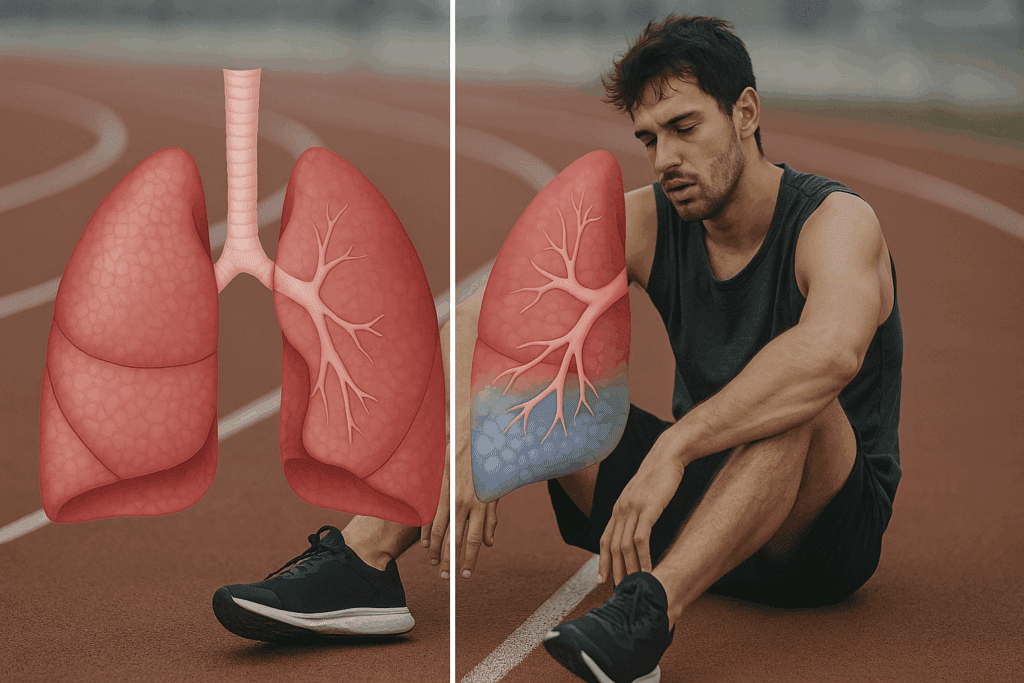
The Impact of Pneumonia on Endurance and Physical Performance
Pneumonia imposes a substantial burden on the body, particularly on the respiratory system, which plays a central role in aerobic and anaerobic performance. Inflammation and fluid accumulation in the alveoli compromise gas exchange, leading to reduced oxygen availability for muscles during exertion. Even after clinical symptoms resolve, residual lung stiffness, fatigue, and diminished aerobic capacity can persist for weeks or even months. These lingering effects can significantly impair stamina, making it difficult for athletes and physically active individuals to return to pre-illness performance levels.
Furthermore, pneumonia may cause deconditioning, especially if bed rest or limited physical activity was necessary during the acute phase. Muscle atrophy, particularly in the diaphragm and intercostal muscles, further diminishes respiratory efficiency. It’s also common for individuals to experience reduced lung volume and weakened breath control, particularly if they did not engage in any post-illness breathing retraining. Therefore, strategic pneumonia exercise programs must address both the residual physiological damage and the lost performance capacity through methods that are safe, gradual, and evidence-based.

Why Breathing Exercises Matter in Post-Pneumonia Recovery
One of the most vital aspects of recovery involves retraining the lungs and respiratory muscles to function effectively. Deep breathing and coughing exercises offer a non-invasive, low-cost, and physiologically sound approach to improving respiratory function. These exercises are designed to expand the lungs fully, encourage efficient gas exchange, and mobilize mucus that may still be present post-infection. Deep breathing and pneumonia rehabilitation go hand in hand, especially when the goal is not just recovery, but enhanced endurance.
Breathing exercises for cough relief, including controlled inhalation and exhalation techniques, promote the reopening of collapsed alveoli and restore lung elasticity. As patients engage in these practices, they gradually increase their tidal volume—the amount of air inhaled and exhaled with each breath—which is directly correlated with endurance performance. Similarly, coughing exercises help remove excess mucus that can block airways and impede optimal oxygen uptake. Together, these practices form a crucial foundation for more advanced training.
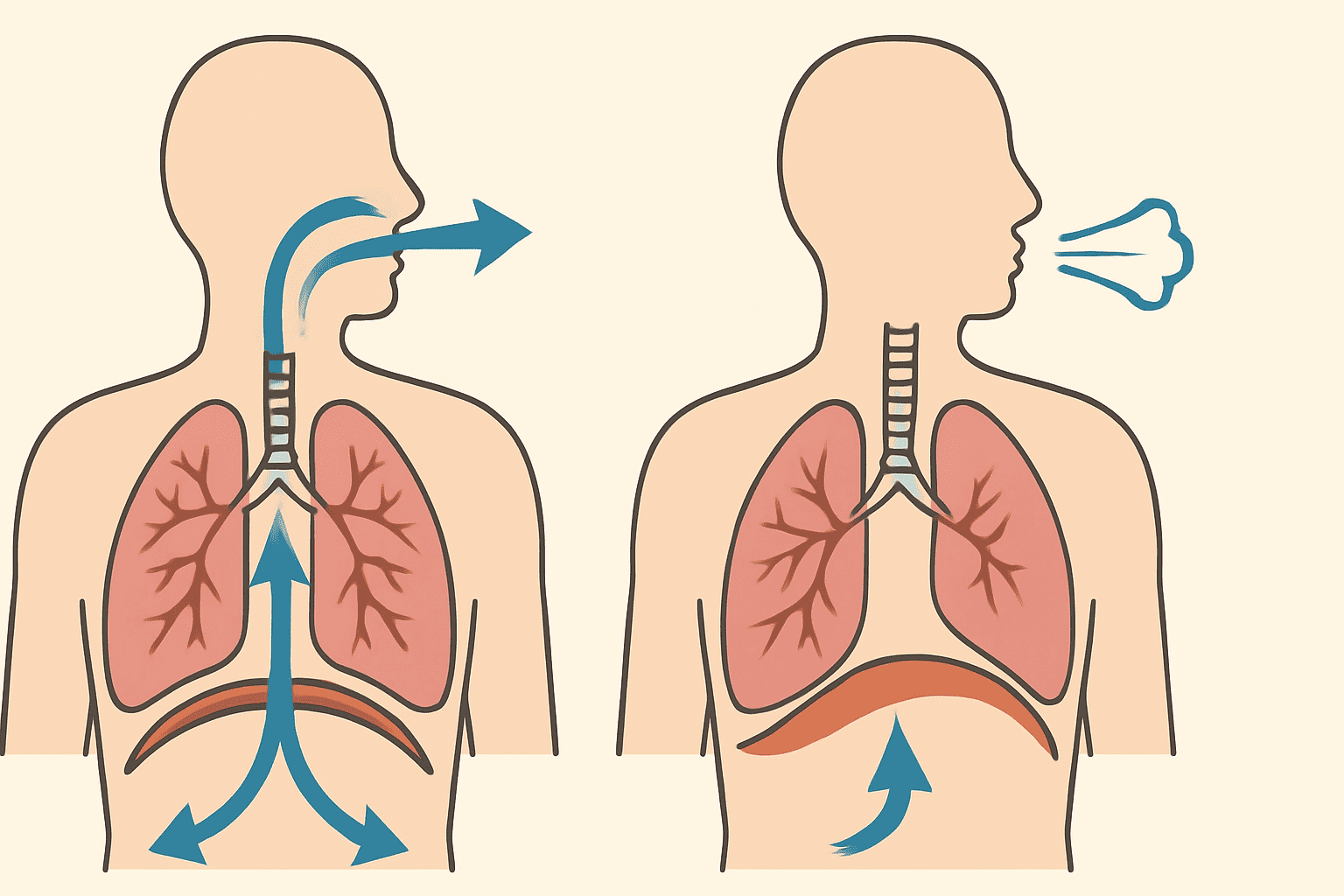
Understanding the Mechanics: How Deep Breathing and Coughing Work Together
To fully grasp the benefits of a post-pneumonia breathing regimen, it’s important to understand the physiological mechanics involved. Deep breathing activates the diaphragm, the primary muscle responsible for respiration. By engaging in diaphragmatic breathing, individuals can maximize their lung capacity, reduce shallow breathing patterns, and improve overall ventilation. This is particularly important for athletes whose aerobic capacity depends on the efficiency of oxygen delivery and carbon dioxide removal.
In parallel, coughing plays an essential role in airway clearance. A productive cough, when performed correctly, generates enough force to expel trapped mucus and pathogens from the lower respiratory tract. Techniques such as “turn, cough, deep breathe” are widely used in hospital settings to prevent postoperative complications like pneumonia. When integrated into endurance training post-illness, these methods help maintain airway patency, prevent reinfection, and facilitate improved lung mechanics.
Designing a Safe and Effective Post-Pneumonia Exercise Plan
Crafting a post-pneumonia exercise plan that includes breathing and coughing components requires careful attention to timing, intensity, and individual capacity. Initially, exercises should focus solely on breathing retraining, using tools like incentive spirometers or guided diaphragmatic breathing sessions. These tools provide real-time feedback and help users maintain consistency in their practice. As stamina improves, mild cardiovascular activities such as walking or cycling can be introduced alongside continued breathing and coughing exercises.
A phased approach works best. In the early days, performing deep breathing and coughing exercises three to four times daily helps establish the habit while gradually improving lung function. As the patient progresses, these exercises can be paired with low-intensity aerobic training to recondition the cardiovascular system without overstressing the lungs. For example, pairing walking with periodic breathing exercises for cough management can help reinforce respiratory muscle strength and endurance simultaneously.
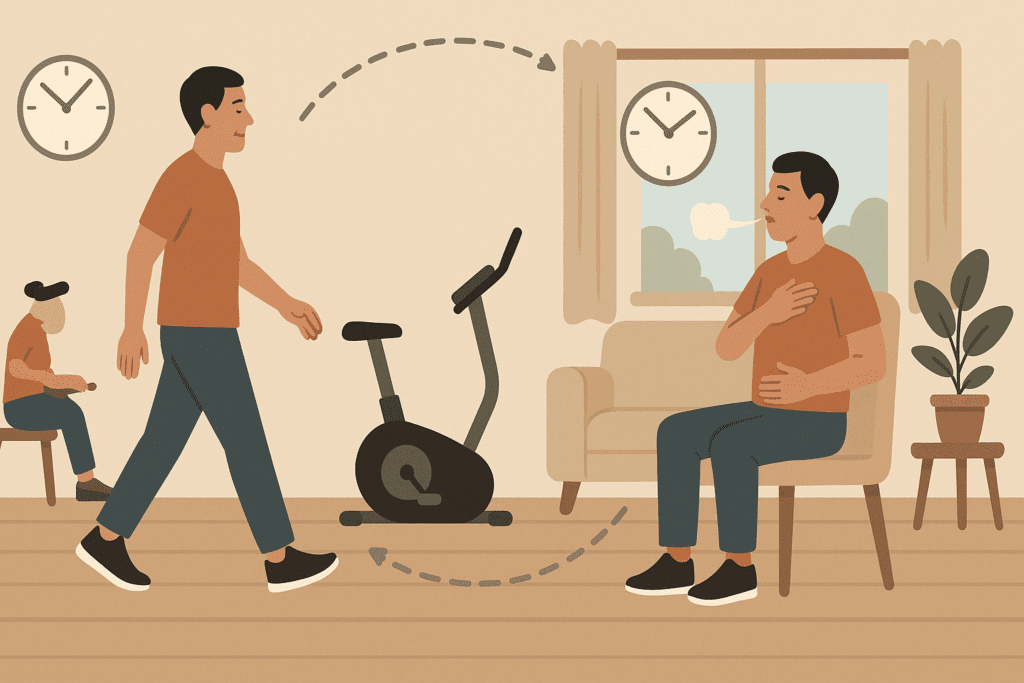
The Role of Deep Breathing and Coughing in Endurance Enhancement
From a performance perspective, restoring lung capacity through targeted exercises has far-reaching implications. Endurance athletes rely on optimal pulmonary function to sustain high workloads and regulate energy metabolism. Any impairment in lung efficiency translates to quicker fatigue, reduced VO2 max, and suboptimal performance. This is where deep breathing and coughing exercises become critical for not just recovery, but also for advancing one’s endurance threshold.
Athletes who have recovered from respiratory infections often report experiencing breathlessness even during low-to-moderate intensity workouts. In such cases, structured pneumonia exercise regimens that incorporate diaphragmatic training and airway clearance provide a pathway back to peak performance. Deep breathing improves oxygen uptake and delivery to working muscles, while coughing exercises maintain clear airways, thereby reducing the work of breathing during exertion. Over time, these interventions enhance aerobic capacity and contribute to greater training efficiency.
Incorporating Breathing Techniques into Athletic Training
Beyond recovery, these breathing methods can become permanent tools in an athlete’s training toolkit. Controlled breathing techniques such as box breathing, pursed-lip breathing, and the Buteyko method have been widely used to improve focus, reduce anxiety, and increase oxygenation during performance. When combined with traditional conditioning, they enhance respiratory endurance and mental clarity.
For those emerging from pneumonia, starting with simple deep breathing and coughing exercises can ease the transition back into competitive training. Gradually, more advanced techniques can be layered on to further elevate performance. Athletes often find that their breath control improves dramatically after consistent practice, leading to better pacing, improved lactic acid clearance, and heightened performance under stress. The integration of such breathing strategies into warm-ups and cool-downs ensures that respiratory health is continuously supported.
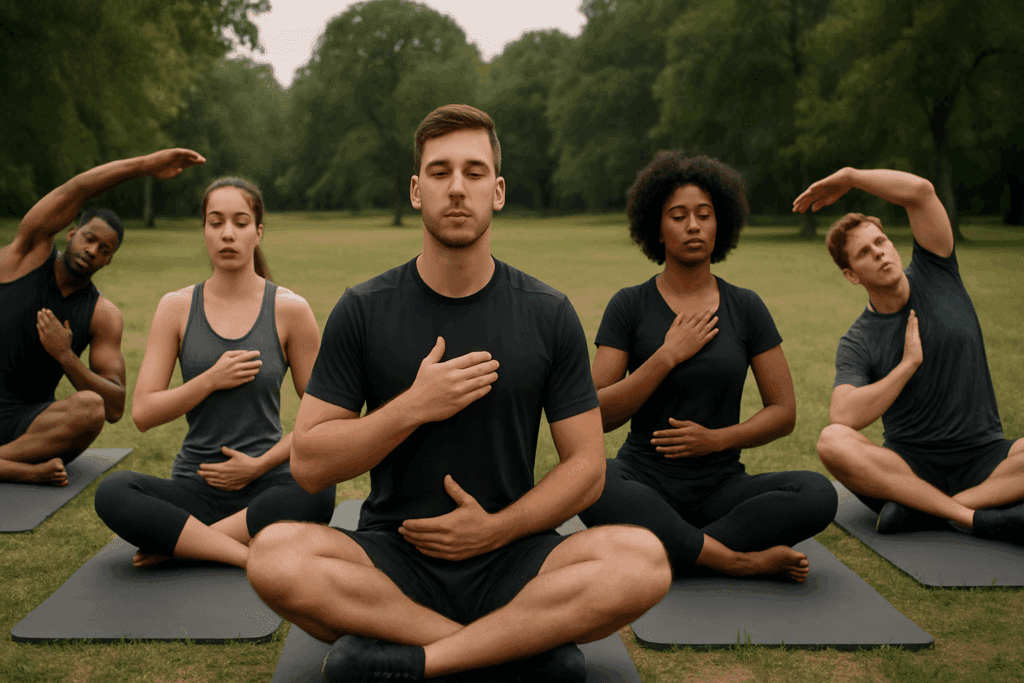
Monitoring Progress and Avoiding Setbacks
While the benefits of post pneumonia exercises are clear, it’s essential to monitor progress and recognize potential warning signs that may require medical attention. Individuals should track symptoms such as persistent fatigue, breathlessness, or chest discomfort, which may indicate unresolved inflammation or complications. Consulting with a healthcare provider or respiratory therapist can help tailor the exercise plan based on lung function tests and overall health status.
Recovery is not linear, and overexertion can delay healing or cause setbacks. Therefore, pacing is crucial. A common mistake is to resume high-intensity training too quickly, which may exacerbate symptoms or trigger relapse. Instead, a gradual increase in exercise intensity—paired with consistent use of deep breathing and coughing strategies—helps create a sustainable path to full performance restoration. Objective markers such as pulse oximetry, heart rate variability, and perceived exertion scales can provide helpful insights into readiness for progression.
Long-Term Benefits of Respiratory Retraining
The utility of breathing and coughing exercises extends beyond the post-recovery period. Over time, individuals who maintain these practices often report improved respiratory awareness, better control during high-stress situations, and a lower incidence of respiratory infections. Deep breathing exercises for pneumonia recovery also promote relaxation, which can be valuable for stress reduction and mental resilience—key traits for any endurance athlete.
Moreover, these exercises can help compensate for structural changes in the lungs that may persist after pneumonia. For example, some individuals experience minor scarring or reduced elasticity in lung tissues, which can limit maximum ventilation. By continuously engaging in practices that stretch and mobilize the respiratory system, one can mitigate these effects and maintain high levels of performance. Coughing and deep breathing exercises for pneumonia should thus be seen not only as a recovery tool but as a long-term investment in respiratory health.
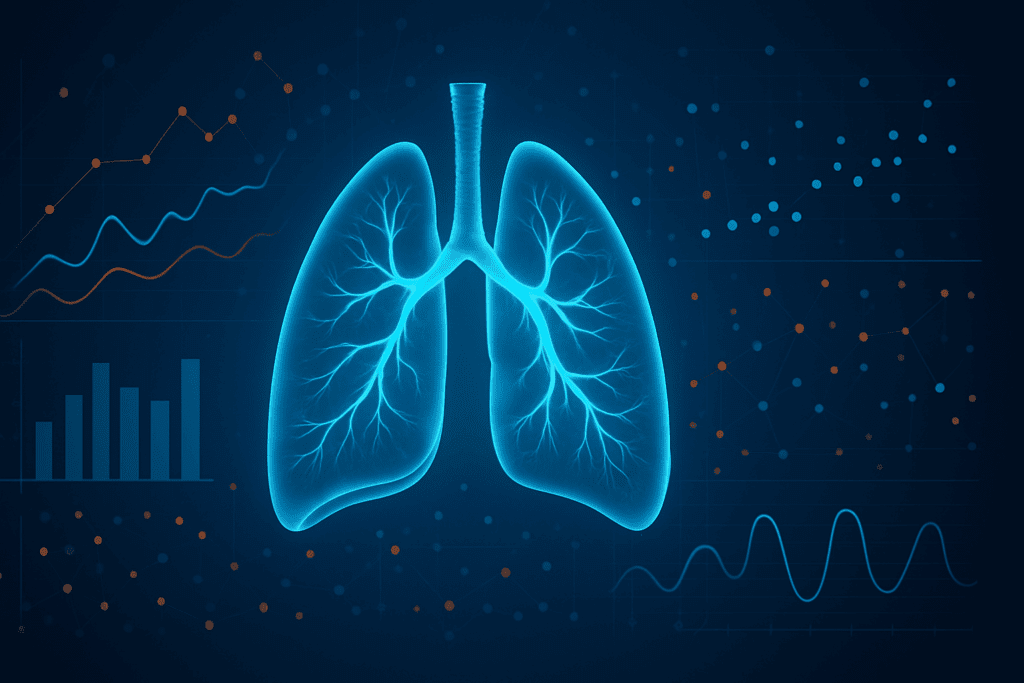
Supporting Research and Clinical Evidence
Numerous clinical studies support the efficacy of respiratory exercises in enhancing lung function and overall endurance post-infection. Research has shown that deep breathing and coughing exercises can significantly improve lung volumes, reduce hospital stays, and decrease readmission rates in pneumonia patients. These findings underscore the medical credibility of these interventions, particularly when used as part of a comprehensive recovery program.
Moreover, sports medicine literature emphasizes the role of respiratory training in performance enhancement. Studies on swimmers, cyclists, and runners have demonstrated that respiratory muscle training can increase VO2 max and reduce oxygen cost during exercise. For individuals recovering from pneumonia, the overlap between therapeutic breathing techniques and athletic conditioning creates a unique synergy that can be harnessed for optimal recovery and performance.
Frequently Asked Questions: Deep Breathing and Coughing Exercises After Pneumonia
What are some advanced techniques to improve the effectiveness of deep breathing and coughing exercises for pneumonia recovery?
To elevate the impact of coughing and deep breathing exercises for pneumonia, consider integrating breath-hold techniques and guided resistance breathing. Breath-hold practices, such as those used in yoga pranayama or free diving training, help strengthen the diaphragm and improve oxygen retention. Resistance tools like inspiratory muscle trainers (IMTs) can also be incorporated to add load during inhalation, gradually increasing respiratory strength. Adding positional variation—such as performing deep breathing and coughing exercises while lying on one side or in prone position—can help mobilize different lung regions and clear secretions more thoroughly. These advanced strategies, when practiced consistently, can enhance post pneumonia exercises by targeting both mechanical and functional limitations.
Can emotional stress impact the results of a post-pneumonia breathing regimen?
Yes, psychological stress can significantly affect the success of a breathing-focused recovery plan. Emotional strain often triggers shallow breathing, increased heart rate, and tension in the chest wall, which can limit the efficiency of deep breathing and coughing exercises. When recovering from pneumonia, stress can exacerbate fatigue and hinder full lung expansion, particularly in individuals struggling with anxiety or depression post-illness. Practicing mindfulness-based breathing techniques as a supplement to the standard deep breathing and coughing exercise regimen may improve emotional resilience and physiological outcomes. Incorporating relaxation breathing or paced respiration also helps mitigate these effects and promotes sustained adherence to the program.
How does age influence the benefits of breathing and coughing routines after pneumonia?
Age plays a crucial role in determining the response to post pneumonia exercises. Older adults may have less elastic lung tissue, reduced muscle strength, and slower mucociliary clearance, making it more difficult to perform deep breathing and coughing effectively. However, with structured guidance and regular practice, older individuals can still gain substantial benefits from coughing exercises and breathing retraining. They may also respond better to gentle techniques such as the “turn, cough, deep breathe” method, which balances effort with comfort. In contrast, younger individuals may recover respiratory function more rapidly, but still need consistent training to prevent reinfection and regain endurance.
Is there a difference between exercises for pneumonia recovery and those used in asthma or COPD management?
While there are overlaps, especially in breathing techniques, pneumonia exercise protocols prioritize lung re-expansion and mucus clearance during the recovery phase. In contrast, COPD and asthma breathing strategies often focus on air trapping reduction and bronchial dilation. For example, deep breathing and coughing exercises for pneumonia emphasize forced exhalation to expel residual mucus, while asthma-focused breathing may use prolonged exhalation to prevent wheezing. That said, methods like pursed-lip breathing or segmental breathing can be helpful across all respiratory conditions. It’s essential to tailor breathing exercise for cough relief and lung function recovery based on the specific pathology involved.
How do elite athletes modify respiratory training after a pneumonia diagnosis?
Elite athletes often collaborate with sports medicine and pulmonary specialists to design customized respiratory retraining regimens. For them, the challenge isn’t just overcoming illness, but doing so without compromising future performance. Coughing and deep breathing exercises for pneumonia are adapted to include high-altitude simulation masks, power breathing tools, and precise VO2 testing to monitor recovery. These athletes may also integrate underwater training and high-resistance breathwork to rebuild their respiratory stamina more efficiently. By layering endurance and breath control with foundational pneumonia exercise protocols, athletes can regain peak conditioning without rushing their return.
Can breathing and coughing techniques support long-term lung resilience beyond recovery?
Absolutely. Deep breathing and pneumonia recovery strategies, when maintained consistently, provide long-term benefits that extend far beyond immediate healing. These techniques condition respiratory muscles, reduce inflammation susceptibility, and support better oxygenation during physical exertion. Moreover, individuals who continue post pneumonia exercises often experience fewer upper respiratory tract infections due to improved lung hygiene and mucus mobility. The added benefit is increased lung awareness—many people learn to sense early signs of congestion or decreased capacity and respond proactively. Long-term adherence to these exercises serves as preventive care for the respiratory system.
What role do body mechanics and posture play in respiratory recovery?
Posture is a critical yet frequently overlooked element of effective respiratory rehabilitation. Poor posture—especially prolonged slouching—compresses the thoracic cavity, limiting the ability to perform deep inhalations. Engaging in deep breathing and coughing exercises while maintaining proper spinal alignment can significantly enhance lung expansion and secretion clearance. Even small adjustments, like sitting upright with shoulders relaxed or incorporating postural drainage positions, can optimize the outcome of each session. Many therapists recommend combining posture correction with “turn, cough, deep breathe” routines for compounded benefits.
Are there digital tools or apps that can support pneumonia breathing exercises?
Yes, several digital platforms now offer real-time feedback and progress tracking for individuals recovering from pneumonia. Apps like RespiRelax, Breathe+, and MySpiroSense provide guided deep breathing sessions, timed breath holds, and reminders for coughing exercises. These tools can be particularly helpful for maintaining consistency, especially when motivation is low during long recoveries. Some devices even integrate biofeedback to help users refine their technique and track metrics such as breath depth and rate. When combined with traditional deep breathing and coughing exercises, these tech tools can personalize the recovery journey and boost engagement.
How can caregivers support patients performing breathing exercise for cough relief?
Caregivers play a vital role in ensuring the safety, effectiveness, and continuity of respiratory routines. Their presence can provide reassurance, motivation, and help in maintaining correct technique, especially for frail or elderly patients. In hospital or home settings, caregivers often assist with “turn, cough, deep breathe” exercises by guiding patients through position changes and timing each cycle. Educating caregivers about the purpose and correct implementation of post pneumonia exercises empowers them to notice signs of respiratory distress or fatigue. Their involvement can transform a passive recovery process into a collaborative healing experience.
What precautions should be taken when starting deep breathing and coughing after hospitalization?
Following hospitalization for pneumonia, it’s essential to ease into respiratory exercises with medical guidance. Some patients may still have fragile lung tissues or residual inflammation that makes aggressive coughing exercises risky. Starting with gentle breath expansion and low-intensity deep breathing and coughing exercises helps prevent strain and avoids triggering bronchospasm. Monitoring for symptoms like dizziness, chest pain, or oxygen desaturation ensures safety during each session. It’s also wise to coordinate with a respiratory therapist or physician who can adjust the pneumonia exercise regimen according to recovery milestones and any underlying health conditions.
Conclusion: Rebuilding Strength and Stamina Through Respiratory Mastery
The journey from illness to peak performance is neither immediate nor effortless, especially after a condition as impactful as pneumonia. However, with a structured approach that prioritizes deep breathing and coughing exercises, individuals can rebuild not only their lung function but also their endurance and athletic capabilities. These practices are far more than rehabilitative routines—they are essential components of a performance-driven lifestyle that values resilience, adaptability, and long-term health.
Integrating post pneumonia exercises into everyday training ensures that recovery is not just about returning to baseline but surpassing it with renewed strength. Whether through structured diaphragmatic breathing, purposeful coughing routines, or synchronized breathwork during workouts, athletes and fitness enthusiasts can transform their respiratory systems into a powerful asset. As science continues to validate the benefits of deep breathing and pneumonia recovery strategies, one thing remains clear: mastering the breath is fundamental to mastering endurance.
Was this article helpful? Don’t let it stop with you. Share it right now with someone who needs to see it—whether it’s a friend, a colleague, or your whole network. And if staying ahead on this topic matters to you, subscribe to this publication for the most up-to-date information. You’ll get the latest insights delivered straight to you—no searching, no missing out.

